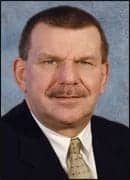
|
| Shannon White is senior associate manager with American Hearing Aid Associates (AHAA), West Chester, Pa. Her office is in Greenville, NC. |
Is your business ready for a practice development representative?
It is impractical to expect a practice owner who is also treating patients to devote any significant amount of time to outside sales calling. Hiring a practice development representative (PDR) gives the practice owner a valuable resource to bring in new patients.
In the beginning, you the practice owner must do a myriad of jobs within your practice—from business planning to hearing instrument fittings. And, in the beginning, the job of marketing to bring in new patients is one of the most important needs that your practice has. Often, though, it is a real struggle for the practice owner to create and distribute broad-based advertisements to the practice’s market area to attract new patients.
So in the beginning, one of the most lucrative, specialized markets is often not targeted simply because you do not have the time. That market is referrals.
However, as the practice grows, it behooves you to hire a specialized salesperson to call on those entities in your market area that are strong potential referral sources for your practice.
Enter the PDR
The objective of a practice development representative (PDR) is to promote the services of your practice to all potential referring entities within your market area so that the number of patients being seen in your practice grows significantly. Referral sources include primary care physicians, ENTs, managed care sources like large employers and unions, senior housing units, assisted living facilities, and nursing homes.
Hiring a good PDR will take a huge load off your to-do list and should provide a rewarding increase in the number of patients visiting your practice.
Dos and Don’ts of the PDR
An effectively working PDR will make 50-60 telephone calls a day to set up appointments. He or she will mail letters and packets of information about your practice to prospects. The PDR will make the actual visits to the referral sources. Additionally, the PDR will maintain and nurture the referring relationships once they have been secured.
The PDR should not be expected to do recalling of current patients or any audiology functions, Web site development, repairs, and other routine office jobs. This person should be left free to focus on just one very important market: outside sources of referrals.
The PDR’s Right Approach
One of the “truths” about sales is that, if one makes enough calls, they will lead to presentations, and if one makes enough presentations, they will lead to appointments, and if one makes appointments, they will lead to referrals—assuming that your PDR is good at his or her job.
Successful PDRs do at least two things right. The first is effective territory management. This means developing the right message, aimed at the right potential referring sources and at the right frequency.
The second is to have great selling skills for openings, discovering needs, handling objections, and closings. A sharp PDR will constantly look for ways to improve his or her skills by reading, attending seminars, and formal classes. American Hearing Aid Associates is one provider of training for PDRs for its network members in their local areas, nationwide.
The Right Message
Developing the right message is key. The message must stress value. The message must be based on your “brand.” What makes your practice different? The message becomes the “core message” that is discussed in every call.
The PDR will develop marketing collateral pieces that promote consistency in delivering the core message. These can include core selling pieces, patient/employee brochures that define hearing problems and create interest in their resolutions, and leave-behinds.
The PDR can create a “slim Jim” as a leave-behind for the business manager or physician. It should be simple, including the practice name, the core message in easy-to-read bullet point style, insurances accepted, office locations/map, and a brief overview of the credentials of your audiologists/dispensers.
A brochure aimed at potential patients should, again, be simple, keeping the target audience in mind. Its goal is to create an interest in and present the adverse impacts of hearing impairment, the benefits of hearing aids, and directions on whom to see or call to have their problems addressed and resolved.
It is a good idea not to spend a lot of money on these brochures as most will be quickly tossed. The PDR can implement a simple keying system to track the number being used. We have found that sales brochures do generate enough calls to make them worthwhile.
A “master visual aid” can be created that the PDR can use to hold all presentation materials. It should be the primary piece for the PDR to present from, orderly and tabbed for quick reference. Of course, this would not be left behind on the call.
The message must be delivered to the right potential clients. The PDR will identify the right targets of opportunity (TOPs), using various research methods. These include tools such as Docfinder, the AMA and other specialty professional medical associations, WebMD, health care insurance company directories, Yellow Pages, and other trade associations in the general business and health care industries.
The PDR’s TOP Targets
The PDR will prioritize the TOPs that have the most potential for referrals. For example, obviously a practice of 10 primary care physicians would be a higher priority than a practice with two. A nursing home with 150 beds would be a more valuable prospect than one with 50.
Once the highest value targets are identified, the serious calling to them begins. The PDR extends his or her “reach” gradually, evaluating results, eliminating “dead leads,” and replacing them with new ones.
A Call File is a must for recording progress with each potential client. It starts with a Call Planning Sheet, on which the PDR records phone calls, appointments set and met, results, and follow-ups. This is a key document that contains information about potential clients, their company history, products, key decision makers, financial information, and any other information that can assist in creating a customized sales plan for that client.
The right frequency. Ideally, the PDR will make a first visit to a potential client and then gain his or her confidence that leads to follow-up visits. The “right frequency” is the optimal number of times that a client should be visited in a given time period. For example, a key medical practice or large employer could be targeted to be visited every 2 weeks—or until they can repeat your core message without pause! Repetition builds retention.
The right types of calls. Several types of calls can be made. “Appointments” are ones that last from 2 to 30 minutes. “Drop-ins” are very short, like a 15-second in-the-doorway salute as the PDR walks by. “Lunches” are golden, lasting from 30 minutes to an hour. Lunches are usually more likely with general business clients and medical facility executives than physicians these days.
Finally, there is the “grand round,” where the PDR has the practice owner accompany him or her on a call. This is especially valuable for calls on larger, more potentially lucrative clients.
The right persistence. Corporate America is busier today than ever before. Physicians are especially busy. In doling out their valuable time, business executives are choosing to see persons they perceive will bring them value, persons who are going to bring benefits to their businesses. So your PDR must demonstrate that he or she is offering a win-win situation to potential clients.
Start with a Plan
The PDR should start with a plan, doing the research to determine the primary targets. He or she should create a business plan, doing a SWOT (analyses of internal strengths and weaknesses and external opportunities and threats) of the market and the practice. The PDR should also analyze and evaluate the competition, and, together with the practice owner, set referral goals and objectives.
Regular meetings with the boss. The PDR should meet regularly with his or her boss, the practice owner, at least weekly. Among the topics covered in these meetings are a review of the number of referrals obtained compared to the goal, a review of the targets being tracked, the number of calls made, and a summary of near-term potential.
Then, at least quarterly, the PDR and owner should review the business plan, again focusing on progress toward meeting the call and referral goals. In short, are the business plan’s strategy and tactics working? At these meetings the two can also identify and discuss any training needs.
At these meetings, the PDR should always ask for clarity regarding expectations and obtain answers to any questions he or she has.
Summary
It is impractical to expect a practice owner who is also treating patients to devote any significant amount of time to outside sales calling. Hiring a Practice Development Representative (PDR) gives the practice owner a valuable resource to bring in new patients.
At AHAA, we have found that successful PDR marketing has several key business drivers. These include identifying key “high value” targets among physician practices, other medical-related facilities, and general business employers. Clever PDRs also cultivate key opinion leaders in the community. They are not always among the high value targets, but they can drive the opinions and decisions of others.
Referral marketing must be approached systematically and with singleness of purpose. The PDR must be hired to do external marketing exclusively. He or she must take advantage of continual professional development to hone skills, and the PDR should meet with the practice owner regularly to review results. If a concerted, consistent effort is expended, it will yield results.
Correspondence can be addressed to HR at [email protected] or Shannon White at .




